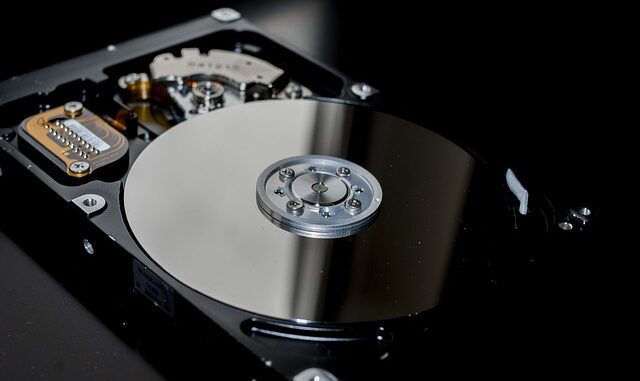
Summary
Geo-redundant backups offer robust data protection by replicating data across geographically diverse locations. This strategy safeguards against regional outages, natural disasters, and cyberattacks, ensuring business continuity. Geo-redundancy provides a crucial safety net for data, allowing for swift recovery and minimizing downtime.
TrueNAS lets you oversee data integrity across locations with its self-healing features.
** Main Story**
Data, it’s the lifeblood of any business these days. And let’s be honest, traditional backup methods? They’re just not cutting it anymore, especially when you consider the increasingly sophisticated cyberattacks and natural disasters. That’s where geo-redundant backups come in. Think of it as a robust safety net for your precious data, replicating it across different geographical locations. This way, you’re mitigating the risk of data loss from regional outages, ensuring business continuity even when things go sideways.
Understanding Geo-Redundancy: It’s All About Location, Location, Location
So, what is geo-redundancy exactly? It’s essentially duplicating your critical infrastructure and data across multiple data centers, and these aren’t just down the street from each other; they’re in completely different regions. This eliminates that dreaded single point of failure that can cripple traditional backup systems. If, say, a hurricane wipes out one location, your data remains accessible, and operations can keep humming along at a secondary site. I remember one time, our main server room flooded, and if we hadn’t had geo-redundancy in place? We would have been dead in the water, what a nightmare that would have been. Point is, this capability dramatically reduces downtime and, crucially, minimizes the negative impact on your end-users.
How it works
Usually, geo-redundant backups rely on asynchronous replication. Now, that sounds complicated, but all it really means is that data is copied to the secondary location at regular intervals. There might be a slight delay, so it’s not a real-time mirror. But that’s okay! It still drastically reduces data loss in a disaster. If your primary site goes down, a failover process kicks in. Operations switch to the secondary location. And when the primary site is back online, data is replicated back from the secondary location through a process called failback. It’s a pretty neat system, right?
The importance of failover and recovery
Failover, it’s the name of the game in a disaster scenario. With geo-redundancy, when the primary site becomes unavailable, the system automatically switches to the secondary location. What does this mean for you? Minimal downtime and uninterrupted access to critical data for your end-users. And while your disaster recovery teams are handling the restoration of data and applications, your backup administrators need to ensure that a suitable recovery environment is ready to go. Geo-redundancy makes this easier by having powered and networked servers on standby, just waiting for the recovery software to utilize them.
Challenges and Considerations
Alright, let’s not pretend it’s all sunshine and roses. Geo-redundancy presents a few challenges, and it’s important to be aware of them. Think about compliance, for starters. You might have data governance policies that restrict where you can store or access data. These policies can create some hurdles. Plus, the backup data at the geo-redundant location is also vulnerable to threats, maybe not the same ones as the primary, but things like extreme weather or regional events. So, careful planning and location selection are key to minimizing risks. And remember, just because it’s off-site doesn’t mean it’s safe, security is a constant consideration.
Modern Backup Strategies: Beyond the 3-2-1 Rule
The old 3-2-1 rule – three copies of data, two different media, one off-site – it’s a classic, but it’s evolving. With cloud technology, we’re seeing enhanced business continuity, extended retention, and much more flexibility in how we implement geo-redundant backup strategies. Cloud solutions make maintaining those off-site backups a lot easier and provide scalable storage options. It’s all about adapting to the times, isn’t it?
Don’t Forget Cold Targets and Retention
In addition to cloud-based solutions, consider cold targets for long-term retention and geo-redundancy. Cold targets, like disk, tape, NAS, or SAN, give you an air-gapped solution. That means your backup copies are isolated from the production network. Recovery from cold storage might take a bit longer, but it’s a solid layer of protection against things like ransomware. On the flip side, if you need super-fast recovery times, local backups or hot copies are the way to go.
Making the Right Choice
Ultimately, the best approach to geo-redundancy depends on your organization’s unique needs and resources. Think about your data volume, recovery time objectives, budget, and compliance requirements. Whether you go for cloud solutions, cold targets, or a mix of both, a well-defined geo-redundant backup strategy is crucial for data resilience and business continuity. It’s all about finding the right balance for your specific situation, and with the pace of technological advancement, it’s a game that never ends!


Interesting point about asynchronous replication. What strategies do you find most effective for managing the inevitable data lag between primary and secondary sites, particularly in industries with strict data consistency requirements?
That’s a great question! The data lag is definitely a key challenge. For strict data consistency, things like application-level acknowledgement and periodic consistency checks are crucial. Also, investing in network infrastructure to minimize latency is a must! I’d love to hear from others facing similar issues.
Editor: StorageTech.News
Thank you to our Sponsor Esdebe